#feed humanity not global warming
Explore tagged Tumblr posts
Text
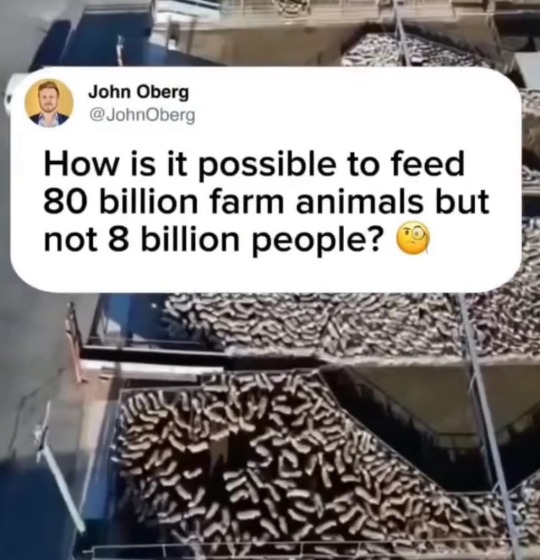
Feed humanity, not global warming.
Veganism is the only healthy and sustainable solution for world hunger. Yet we keep paying farmers to continue the extortion of animals for their flesh to result a large quantity of nutritional food into a small amount of wasteful steak.
Taste is no longer an argument, as humans have already achieved the taste of meat through plantbased alternatives.
If you’re truly concerned for human rights, world hunger and want to contribute to the solution instead of adding to the problem subconsciously.. go choose veganism today.
🌱 x 🌍 x 🫀
#think about it#world hunger#hunger#poverty#go vegan#vegan tweets#solution for the future#vegan for human rights#human rights#feed humanity not global warming
86 notes
·
View notes
Text
RANDOM ASTRO TAKES #3

People born with Neptune in 1H can have heights in their career that not so much people can reaching. That’s because they embodies possibly an ideal at a moment of their life, physically or mentally.
The ban of TikTok during the Venus/Saturn conjunction in Pisces square Jupiter in Gemini is really a return to reality for content creators who scattered the attention span of their followers with a boost of dopamine. It’s a drug abuse that everyone should fight internally. I seriously think that the South Node in Virgo opposite a conjunction North Node/Neptune in Pisces ruler of Saturn makes a lot of people delusional about the responsibilities of each in the destruction of species, the global warming, dumbification of society, that’s terrible for our future.

If you’re lost to interpret outer planets, using their discovery chart can helping you to be more precise on what influence they have, the big three of each :
Uranus, Scorpio Rising/Pisces Sun/Scorpio Moon
Neptune, Cancer Rising/Virgo Sun/Scorpio Moon
Pluto, Leo rising/Aquarius Sun/Scorpio Moon.
The three discovery charts have a Scorpio Moon, that symbolizes the transformation of astrology after each discovery, the emotional depths when conflicts are bringing up to interpreting the planets and all the collective psychology behind them. If you want to knowing better outer planets, start by knowing better Scorpio Moon and her patterns.
Moon and Mars fall in mutual reception bc they’re similar under these signs, reactive and instinctively emotional, intuitively assertive and self destructive patterns. This is our animal spirit, the fuel that feeds your soul. Aquarius (human) has Cancer (instincts) in 6H (animals) where Mars rejoices and Scorpio (depths) in 10H (public image).
The alchemical transmutation is based on the 7 seven planets who are in analogy with 7 metals, like it’s’ so Kali Yuga coded.

Moon and Sun domiciles and exaltation signs follow each others like the light and shadow in the celestial course. It’s a cosmic dance of the duality who makes one in a beautiful artistic cosmos. Aries, Taurus, Cancer and Leo are the brightest of the zodiac, they radiate charisma.
Aries : a pioneer, strong athlete, big brain who learn quickly, the spark who light up the room
Taurus : the warming fireplace who wraps the room in its tender warmth
Cancer/Leo : the midnight sweet summer that gives you memories for life, the beach, vacations, evenings
Mercury makes the link btw the two Moon signs and receive two sextile from the Sun signs, a very alchemist thing.. 😌

It's interesting to note that the golden age of oil began in 1859, when Uranus was in Taurus sextile Neptune in Pisces. 166 years later for theirs returns, resources are running out after numerous crises and the future without them is not yet prepared worldwide. But when oil was starting to be used massively it was in 1920 when Saturn was in Virgo, the health of the Earth had started to be impacted massively by our consumption.
With Pluto angular to his derivative sign, Scorpio. I think we gonna experiments a lot more of natural catastrophes on earth, like hurricanes and tsunamis after seism. Taurus is in derivative 4H of Pluto that is in derivative 4H of his sign, he’s gonna destroying all the capitalism.
Mars dominant people are so aware of themselves that they can expand their awareness to the world and universe like Buddha, but David Chalmers is also a good example. His quotes on the consciousness are untouchable.




#astrology#zodiac#astro notes#witchcraft#astro observations#birth chart#astrotakes#astro tumblr#random astro observations#astrology placements#astro placements
272 notes
·
View notes
Text

Huzzahh, it's species number 3! (There's a total of 6, including humans. 7 if you count artificial intelligences, 8 if you count the uhh other intelligences).
An official up to date visual for everyone's favorite communist amphibians, the Kixeli, and some up-to-date info!! ->
Kixeli are a small sentient species hailing from a planet covered mostly in ocean. They are amphibious, and originally evolved to switch between swimming and climbing using their webbed hands and powerful arms.
Their skin is permeable, allowing them to extend their time underwater to hunt and gather as well as reproduce, but due to their larger body and brain size/oxygen needs this isn’t sustainable and they must return to the surface.
Alongside their frequent trips outside the water, they also have a mucus layer and several specialized glands (including in their face by their eyes) to help remove excess salt and change levels of urea in their body to help make sure they dont lose resources when in the ocean.
Kixeli are omnivorous, with a focus on fruits and sealife. many cultures have a preference against eating anything that lives above water, including birds and the like, because they see themselves as spiritual equals to those animals as fellow air breathers.
They are oviparous, and have a specific mating season.
Most Kixeli have multiple variable spawn partners and see it as strange to be nailed down to one. Anyone who participated lays their eggs in a communal tide pool carved out in their communities.
Hatchlings are entirely aquatic wirh gills until later months of age, where they will begin to poke their head above water for air and start interacting more with the adults around them, who feed them a nutritive crop milk as they have already absorbed most of their tail by now.
This period is also the beginning of their understanding of language.
Once they lose their tail and grow in their limbs, they are still mostly helpless until those fully develop and myst cling to a caretaker adult in the community (blood parents don’t necessarily always raise their own children, but as someone who laid eggs they are responsible for children as a caretaker so anyone who didn’t want eggs gets left alone).
During their puberty, they will develop adult skin markings, and some can even end up changing sexes (much for the same reason some of them grow gliding membranes, as the result of population and resources balance in their surroundings).
Speakijg of that, there are two categories of Kixeli in their communities: Kel (swimmer) and Arasit (flier).
Arasit are just a rare continuation of their life cycle, since most Kixeli kids end up growing into Kel adults.
Sometimes, though, an Arasit will develop in case the community strongly needs to seek out new territory over long distance (triggered by close proximity to many other Kixeli and a variety of other unknown gactors, like grasshoppers turnkng into locusts.) They can’t truly fly, but they can use the powerful ocean winds and even some launching technology to glide very far to scout new resources and other communities).
Arasit are highly celebrated as voyagers, but Kel are also valued as providers for their existing community and even accompany voyages on ships to help their Arasit stay alive.
Some Arasit will cut and cauterize their membranes to make it easier for them to swim to symbolize they are staying in the community, though usually, they just poke small holes in there so they can wear clothes and be sanitary.
Their blood uses the hemocyanin molecule to carry oxygen, making their blood a bright blue when oxygenated and a thin blue/clear when unoxygenated (so you can see the other warmish colored pigments in there when it’s inside them, that yellowish stuff)
Their ancestors dwelled in deeper, cooler water where this blood type was most advantageous, but a global warming period brought them up to warm waters and eventually above the surface to capitalize on resources.
During this process, they developed some ways to improve the molecule’s lower efficiency in the heat. For one, they kept a small body size so there’s less to deal with. Another thing is that they get oxygen (albeit a small amount) from all over their body constantly through their skin, also somewhat making up for it.
The main mechanism, though, is their metabolism/temperature. They can quickly adjust their metabolism depending on the oxygen conditions in their surroundings to prevent immediate failure if they don’t have access to the right conditions to otherwise cope (this, and along with hemocyanin’s natural ability to handle low oxygen and their skin breathing, means they can tolerate very low oxygen areas that would cause a human to faint, though they’ll typically be pretty out of commission too, and this can have longer lasting effects on their health from the whiplash.)
they use their surroundings for heat when they aren’t doing anything too strenuous, and because they aren’t really producing much of their own they can tolerate even higher temperatures that would normally put them out of commission (and they actually heavily rely on that heat for ease in a lot of other processes), to do anything that has bigger oxygen needs, they can dip into cooler water/shade for periods of higher activity (but can’t stay too cold for too long or else aforementioned other processes will shut down, though it does increase the effectiveness to the point where they can do a whole lot and allows them to swim/navigate cooler areas where their early competitors couldn’t return to, it only as long as they got back quickly and warmed up)
they basically swing between these two extremes but tend to stay at a warmish middle-ground, wearing heating pads on part of their body while still letting larger areas cool off, if that makes sense.
Hemocyanin’s other properties don’t automatically give them a longer life, in fact theirs is very short compared to other species, but it does make them resistant to cancers (a common threat on their sunny planet) and the spread of diseases in their dense communities
Being cold-blooded wasn’t a problem on their mostly tropical planet. It is a considerable problem once they left it, though, hence the heating pads most wear to warm up.
many also live in areas without a large body of water nearby (or an easy way to access said body of water) but still need to stay damp to maintain their music layer and trap oxygen, so many also carry spray bottles or wet rags with them to always stay damp.
Kixeli are highly social (with their name even roughly translating to "belonging together"). they rarely live in groups of less than 5.
They experience severe negative side effects from isolation. Their naturally intense empathy also makes it extremely damaging for them to see other Kixeli injured or dead, sometimes leading to their own death from shock if they were the one that did it (though this has not stopped wars over their scarce resources in the past, typically because that intense sense of kinship was naturally strongest towards those among their own community, and if Their community was suffering then they had to get rid of the source of it by any means. )
This period nearly drove them to extinction, and led to a Global Community movement that argued for intercommunity cooperation and the end of 'us and them thinking'.
Due to their sliminess, Kixeli normally keep clothing to a minimum and overall don’t have a need for it beyond temperature control and ornamentation.
They have none of their own social taboos about nakedness, having no external genitalia, but still often clothe themselves to the standards of others due to the pressure/need to be polite from other species.
They also have few class divides within their own communities, with everyone working for the good of the whole, and no sex/gender roles beyond squirter and egg layer since everyone cares for the eggs.
To humans, their language sounds like birdsong, with lots of repetitive noises and subtle shifts in pattern and tone.
Their unique vocalization makes their languages hard to learn and even harder to speak, but they themselves are incredible mimics (only surpassed in some ways by humans because lips and teeth).
The fin on their forehead is similar to eyebrows in communicating emotion or tone. They can see a similar color spectrum to humans and love bright contrasting colors similar to their own skin patterns.
They favor “fast food”, or anything that can be carried easily as you swing around in a tree or on a boat.
Payment/restaurants doesn’t really exist for them, they just have areas where food brought in by providers is available to the community (or people just eat what they catch and then bring extra to the community.)
They also don’t chew their food, though some dishes are meant to be squished to the roof of the mouth with the tongue to experience the flavor
Their clothing is often “readable” in that many individuals wear clothing that represents a certain story, event in their life, event in their community, or mythical hero that can be derived from looking at their clothing from the head down.
In the two guys up there, the Arasit is wearing the equivalent of booty shorts cut scantily close to their Hole depicting one version about the founding of the first community (though a simplified one, so it’s actually more like the equivalent of wearing a crop top tee with a little monochrome dog on it or something).
This kind of imagery is common among Arasit, even modern ones, because founding/birth/life are their associations in religious cultures.
The Kel alongside them is wearing a more complex getup meant to show the inciting incident of one of the nomadic communities mythic hero’s journey, when he was cast from the star sea by the wicked Long Arms into the deep sea.
This would be seen as all most goth since this part of the story is seen as eerie and it depicts their underworld along the hem and bracelets.
By wearing clothing associated with a specific figure//story, they can also show gender identity based on whether that figure or hod was male, female, neuther, etc(helping people draw the right conclusions despite the visible evidence of their sex written on all their skin. The clothing and any makeup done on the fin is usually their main reference point for judging how to address someone. )
#alien species#original species#spec evo#worldbuilding#drawing#speculative biology#xenobiology#Kixeli
257 notes
·
View notes
Text
oh wow tumblr says this acc is 10 years old today ( 16 december 2024)
wish i could celebrate or draw smth but i am sick (who thought that connecting electricity to warming up system is good idea. so if electricity is off, your warming up system is off and you can't turn on the warming up electric thing. who was it. didn't have electricity all night in december, slept in my outdoors pants and jacket, under 2 blankets, got fever, what was that, 0/10)
but want to say smth anyway
this blog is very dear to me. this place. it was literally my window to the world, cause i was born in hell place - russia. russian village even. (yeah, that thing with electricity here is nothing to compare to problems there)
i learned english on tumblr. learned other mindset. my feed is basically global news newspaper, but in meme form. and of course, i met you
my followers, people who watch my posts, like it, reblogging, writing comments.
thank you so much.
i am getting so much love from you. so much support in most dark times. this blog once was more artsy, with rare text. but now it is as messy as my life and. a lot of people still stay. i feel so much love.
art is more rare here now but i am happy that i found myself in art, my art goal and theme - representation. drawing people who are underrepresented, sometimes not represented at all. destroying all those strange cages artists! put themselves in, and bringing Flame of Freedom, Strive and Love back to art. Spreading kindness.
I am warrior and this is my field of fight. Of course i am human in real life, and can do mistakes, say something wrong do something wrong. But i want to strive to Love Care and Kindness. It is my Ideal
and it was 10 years of going to this point. i am so grateful for you being with me on this road, if someone is new - welcome, is someone is oldies - very hello.
Thank you all. I hope i will continue this path, and you are more than welcomed to join.
With Love, Kris, NWarrior777 🖤
upd: oldies, or maybe new ones - tell in notes some cool stories which you remember about me on tumblr. maybe your fav post or some important moment. it would be cool to have it in ask but if i will answer asks it will all in text again ahah. but, if you want to be anon you still can send ask. i read all of them, but i am not sure i will be able to answer on asks today. lets have fun in notes
49 notes
·
View notes
Text
For Sander van der Linden, misinformation is personal.
As a child in the Netherlands, the University of Cambridge social psychologist discovered that almost all of his mother’s family had been executed by the Nazis during the Second World War. He became absorbed by the question of how so many people came to support the ideas of someone like Adolf Hitler, and how they might be taught to resist such influence.
While studying psychology at graduate school in the mid-2010s, van der Linden came across the work of American researcher William McGuire. In the 1960s, stories of brainwashed prisoners-of-war during the Korean War had captured the zeitgeist, and McGuire developed a theory of how such indoctrination might be prevented. He wondered whether exposing soldiers to a weaker form of propaganda might have equipped them to fight off a full attack once they’d been captured. In the same way that army drills prepared them for combat, a pre-exposure to an attack on their beliefs could have prepared them against mind control. It would work, McGuire argued, as a cognitive immunizing agent against propaganda—a vaccine against brainwashing.
Traditional vaccines protect us by feeding us a weaker dose of pathogen, enabling our bodies’ immune defenses to take note of its appearance so we’re better equipped to fight the real thing when we encounter it. A psychological vaccine works much the same way: Give the brain a weakened hit of a misinformation-shaped virus, and the next time it encounters it in fully-fledged form, its “mental antibodies” remember it and can launch a defense.
Van der Linden wanted to build on McGuire’s theories and test the idea of psychological inoculation in the real world. His first study looked at how to combat climate change misinformation. At the time, a bogus petition was circulating on Facebook claiming there wasn’t enough scientific evidence to conclude that global warming was human-made, and boasting the signatures of 30,000 American scientists (on closer inspection, fake signatories included Geri Halliwell and the cast of M*A*S*H). Van der Linden and his team took a group of participants and warned them that there were politically motivated actors trying to deceive them—the phony petition in this case. Then they gave them a detailed takedown of the claims of the petition; they pointed out, for example, Geri Halliwell’s appearance on the list. When the participants were later exposed to the petition, van der Linden and his group found that people knew not to believe it.
The approach hinges on the idea that by the time we’ve been exposed to misinformation, it’s too late for debunking and fact-checking to have any meaningful effect, so you have to prepare people in advance—what van der Linden calls “prebunking.” An ounce of prevention is worth a pound of cure.
When he published the findings in 2016, van der Linden hadn’t anticipated that his work would be landing in the era of Donald Trump’s election, fake news, and post-truth; attention on his research from the media and governments exploded. Everyone wanted to know, how do you scale this up?
Van der Linden worked with game developers to create an online choose-your-own-adventure game called Bad News, where players can try their hand at writing and spreading misinformation. Much like a broadly protective vaccine, if you show people the tactics used to spread fake news, it fortifies their inbuilt bullshit detectors.
But social media companies were still hesitant to get on board; correcting misinformation and being the arbiters of truth is not part of their core business model. Then people in China started getting sick with a mysterious flulike illness.
The coronavirus pandemic propelled the threat of misinformation to dizzying new heights. Van der Linden began working with the British government and bodies like the World Health Organization and the United Nations to create a more streamlined version of the game specifically revolving around Covid, which they called GoViral! They created more versions, including one for the 2020 US presidential election, and another to prevent extremist recruitment in the Middle East. Slowly, Silicon Valley came around.
A collaboration with Google has resulted in a campaign on YouTube in which the platform plays clips in the ad section before the video starts, warning viewers about misinformation tropes like scapegoating and false dichotomies and drawing examples from Family Guy and Star Wars. A study with 20,000 participants found that people who viewed the ads were better able to spot manipulation tactics; the feature is now being rolled out to hundreds of millions of people in Europe.
Van der Linden understands that working with social media companies, who have historically been reluctant to censor disinformation, is a double-edged sword. But, at the same time, they’re the de facto guardians of the online flow of information, he says, “and so if we’re going to scale the solution, we need their cooperation.” (A downside is that they often work in unpredictable ways. Elon Musk fired the entire team who was working on pre-bunking at Twitter when he became CEO, for instance.)
This year, van der Linden wrote a book on his research, titled Foolproof: Why We Fall for Misinformation and How to Build Immunity. Ultimately, he hopes this isn’t a tool that stays under the thumb of third-party companies; his dream is for people to inoculate one another. It could go like this: You see a false narrative gaining traction on social media, you then warn your parents or your neighbor about it, and they’ll be pre-bunked when they encounter it. “This should be a tool that’s for the people, by the people,” van der Linden says.
441 notes
·
View notes
Text
General guide to birds in Israel pt 2- cooler birds
This will be a long post. Link to part 1
White spectated bulbul/bul-bul me-mush-kaf
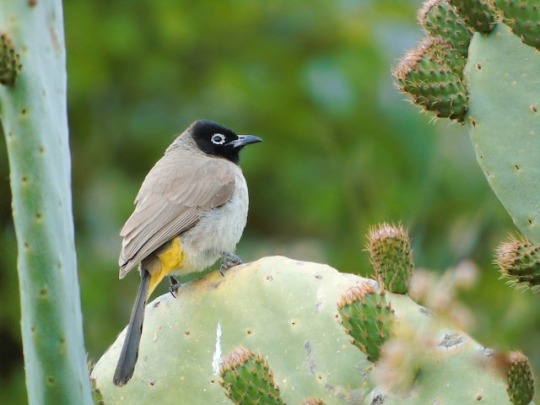
Usually referred to as just bulbul, this bisexual king is the roundest and my most favourite bird. IMPORTANT! BULBUL MEANS DICK! DO NOT TALK ABOUT YOUR LOVE FOR BULBULIM IN PUBLIC!
These birds are slightly larger then the house sparrow and are easily distinguished by their yellow butt. Their calls are reminiscent of frogs. They mate for life and are all bisexual and they cuddle each other. They are a menace to farmers because they are fond of fruit and tend to nibble just a little at a time. You can find them in all parts of Israel as long as there are nice trees nearby.
Eurasian blackbird/shakh-rur

These timid birds like to hide in bushes and trees. Their calls are beautiful and I love them. They are smaller then a pigeon. The males are black and the females are brown. They feed on seeds, fruits and bugs, and use their beaks to search the ground for worms. You can find them in Jerusalem and the north, they like cool weather and don’t fuck with sand.
Great tit/yar-ge-zi ma-tzui
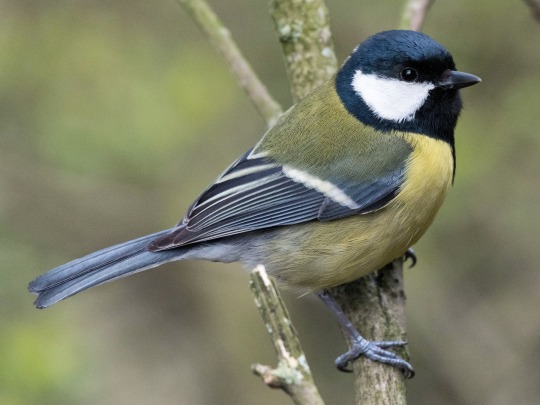
Life isn’t easy for these tiny psychopaths, which might be the reason they developed such a temper. Their Hebrew name translates to “angry one”, and for a reason. They are very aggressive towards other birds. They also feed on the brains of bats. You can distinguish between males and females by the thickness of the black stripe on their belly- males have a thicker one than females. They are most common to the north of Jerusalem, but you can find them in some parts of the desert.
Palestine sunbird/tzu-fit bo-he-ket

No, that’s not a hummingbird, it’s the sunbird! Despite their remarkable likeness they aren’t even a little related. Sunbirds feed on nectar and are pollinators! The males have black feathers that shine in the sunlight (which is how they got their name) and the females are a muddy grey, but they’re just as lovely. You can find them in all parts of Israel, especially near lush flowery areas!
White wagtail/nakh-li-e-li la-van
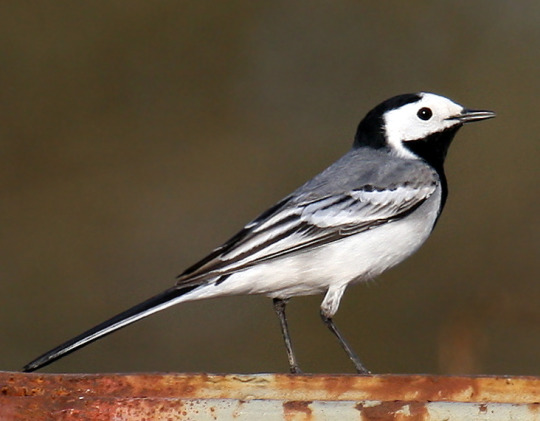
First migrant bird everyone!!! (Some blackbirds migrate here but some nest during summer so shhhh) This lovely round bird starts it’s visits around October and leaves when it gets hellishly warm again. Due to global warming the wagtails visits are shortening, so appreciate them while you can. Like their name suggests, the wagtails wag their tails. A lot. You can find them near water sources during the cold-ish months of the year!
Eurasian jay- or-va-ni shkhor ki-pa
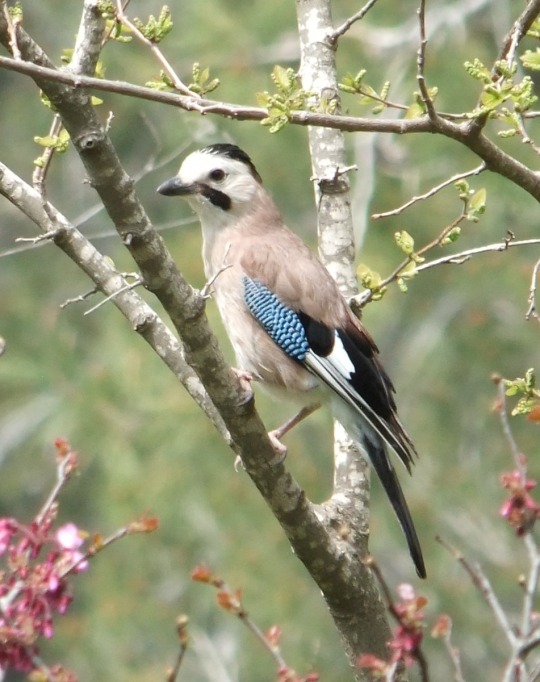
Eurasian jays can be found in other parts of the world, but I’m pretty sure the one we have in Israel is a different sub-species because the ones in Europe lack the beautiful black top that they’re named after.
The jay is a type of corvid, and in addition to being extremely social and intelligent, these birds can mimic other animals. Due to urbanisation, the jays learned to mimic car alarms, the ringing of phones and the cries of human babies. Jays are extremely fond of acorns, and burry them in the ground in preparation for harsher months. A single jay can remember between 4000 to 5000 hiding spots!
Syrian woodpecker/ na-kar su-ri
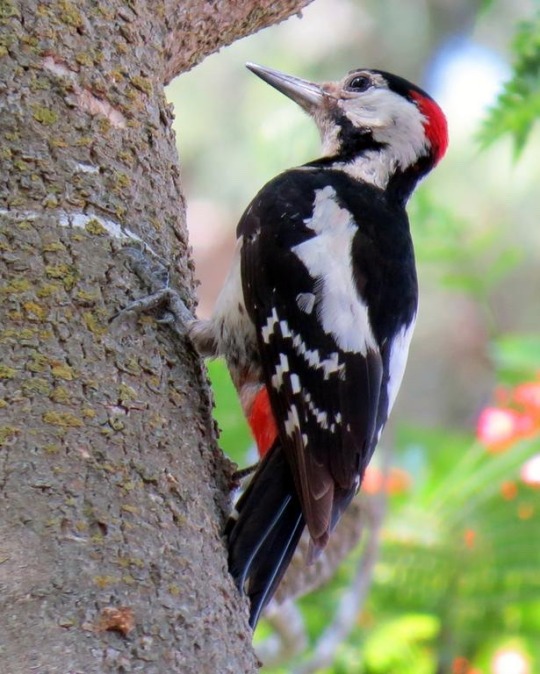
This picture is of a male woodpecker. The females have a completely black head. Woodpeckers can locate bugs that have burrowed inside trees and use their beak and long tongues to eat them, thereby helping the trees get rid of pests! Woodpeckers also love acorns, and compete with jays over them. To prevent concussions, the woodpecker’s tongue wraps around their brain, keeping it in place while they peck. You can find them in non-desert areas of Israel!
Lesser whitethroat/siv-khi to-kha-nim
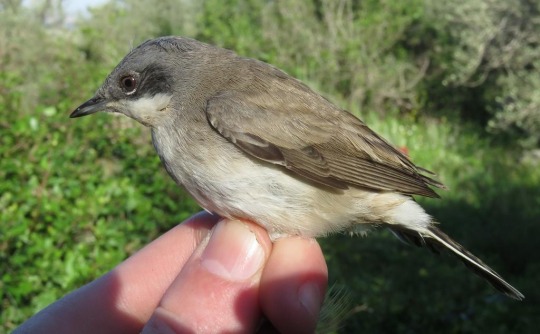
Another migrant birds! These floofballs come here twice a year, once in spring and once in autum, although some whitethroats nest in the north all year long. During their migration you can find them everywhere in Israel, even in very urban areas! They get their Hebrew name, which roughly translates to miller’s shrubbery-liker, because their white chests look how a miller’s apron would look after a long hard day!
Super winged lapwing/sik-sak
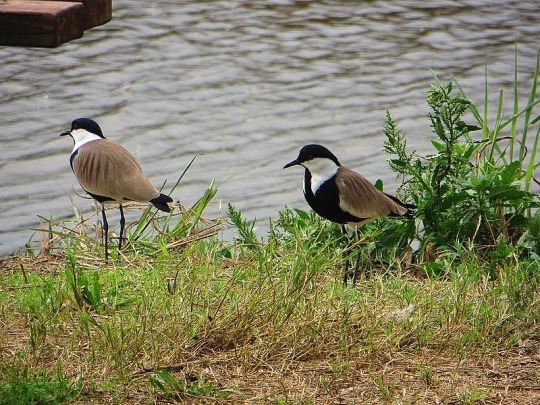
The siksaks are water birds with ridiculously long legs that they use to stab their prey. They kind of look like they are wearing a tux! Their original Hebrew name was “sharoni mezuyan”, which translates to “one that lives in the Sharon and is armed with a weapon” but also “fucking sharoni”. You can find them anywhere in Israel as long as there is a near enough water source.
White breasted kingfisher/shal-dag la-van kha-ze
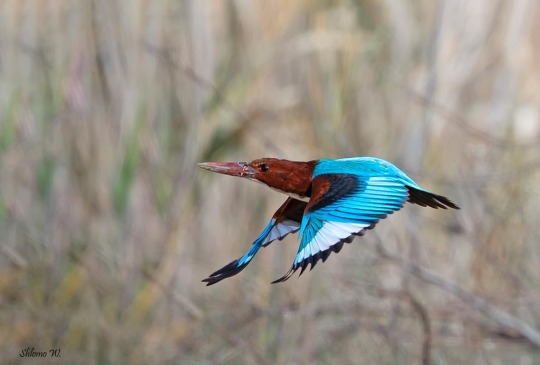
One of my favorite birds. The kingfisher is a magnificent bird of prey with brilliant blue feathers that always make my day. They are most common in the north and west of Israel, but they nest in smaller numbers in the south. They kingfisher’s diet consists of not only fish, but of crabs, frogs, slugs, bugs, and even the occasional rodent. Their varied diet helps them thrive even in drier areas.
167 notes
·
View notes
Text
Truth Or Dare ⁉️ ⁕ Hongjoong



HALLOWEEN EVENT
☆ pairing: hongjoong as Dracula x Human? Reader
☆ genre: mystery, fantasy, horror,
☆ warnings: mentions of blood, sacrifice, vampires and ghosts
☆ word count: 2.1k+
☆ synopsis : You and your friends dare to spend a night at the infamous Dracula's Castle but things go astray as one by one everyone goes missing and you come across the man rumoured to be Dracula.
“You gotta do this!” You hear your friends yell or more like discuss something in the secret hideout.
The hideout is an abandoned laboratory where you sometimes work on illegal stuff. The discussions take place every day here where everyone in your friend group (it's just 2 people) gather to share about the current news (conspiracy theories) and rumours they heard around the town while you are busy building your prototype.
“Bro, I don't wanna die too early. First, fucking global warming, now this shit? Nah I'm out!” Claire shouts as she bangs the old lunch table discarded in the room. Well that's Claire, one of you two friends, being herself. You smile at her humour which strangely manages to entertain you.
“But they offered a reward of 250 grand, if we spend a night there and return alive.” You listen keenly to Kevin who explains the plan before you to decide to jump into their conversation. He's obviously got a strategy if he's pitching the idea, doesn't he? He has to!
“Alive? The fuck is going on there?” Claire yells in terror as it laces her body manifesting itself in her tone which shivers and shrieks.
“Rumour says, it's Dracula, who was sleeping till last month in the villa.” Kevin whispers loudly as if he intended you to hear on their spill the tea session.
“Which shithead woke him up, for fuckssake?” Claire huffs and pushes back her chair. You hear the screeching of the rusty metal and make a note to check their safety because you don't want anyone to break their bones from falling off that thing.
“Someone from med school. They're missing apparently.” Kevin slurs his sentence as if he's making things up or masking up the important details. Cheeky little Bastard who's always up to something. Probably some anatomy geek must have gotten all curious to see Dracula in the flesh and fainted in there or lost his way.
“And now, we're going there to feed him?" Claire shrieks, whose voice sounds like a scared five year old upon seeing a clown which she is to be honest.
“No, obviously! To show whoever is hiding in there, that they cannot hide for long.” Kevin's sentence catches your attention and you think whether to join them or wait and hear more. Of course, you choose the latter.
“So... we're going to expose them?”Claire asks excitedly as if in hopes of going on a ghost hunting mission. They are her time passing activities and the ghost files is her favourite show. “What if it's a cannibal or serial killer?”
“Can you speak positively for once, Claire?” Kevin shrugs, shaking his head in disappointment.
“Sorry.” Claire says softly and the conversation stills, creating an awkward silence in the room.
You finally decide to interrupt as you pull your chair to their table and make yourself comfortable on it. “So, what's the plan?” You say, chewing the strawberry flavoured gum and reading the expressions on their faces.
“See who finally decided to pay attention?” Kevin mocks you and you roll your eyes at his statement.
“Does the area have connectivity? Comms? Anything?” You ask him, because he certainly has some information on this if he's even mentioning the topic but he has a tendency to hide things till after the disaster is done.
“Nope everything's dead. There's a strong magnetic field apparently…” He trails on his words, again and clicks his tongue.
“What in the Stranger Things?” Claire wonders with her mouth hanging open.
“Shut up Claire! You’re watching too much science fiction.” Kevin yells at her, sending a stern glare at Claire who turns her head down with a frown on her lips.
“We gotta do it the pirate way.” you suggest calmly, leaning back on the chair and folding your arms.
“Pirates?” Claire asks, raising her eyebrow and leaning forward with enthusiasm.
“I forgot you had pirate blood for a minute.” adds Kevin and Claire acknowledges the fact with ahh.
“So, if we don't have comms, drones and walkies aren't gonna work. We gotta get flares and some type of marker to make a path for entry and exits.” You say looking at the table and your friends exchange looks.
“A blueprint of the place!” Claire exclaims as if she has figured out the answers to one of the world's unsolvable riddles.
“It's not your fucking aunts house!” Kevin says loudly, giving Claire the ‘I'll murder you’ eyes.
“Yeah he's right. But the villa is not that big to get lost.” You mumble, moving forward and setting your arms on the table.
“How do you know that?” Kevin gives you the sceptical look as if you're a notorious criminal with disgusting crimes.
“It was once our family property, that was a long time tho. Some feud happened and we lost it.” You confess and their faces have the funniest expression you've ever seen. Confused, surprised and wtf?
“You have a map?” Kevin yells in your ear and you retort meters away, squeezing your eyes close due to the pain.
“Kinda, it's a tracing, rather than a map.” you say, rubbing your ear and a flicker of hope lights up on Kevin's face.
“Atleast, we have something.” Claire mumbles as she shares a smile.
“Be at my house at 7, we'll discuss stuff there. That's it for now.”
***
“Listen, the Manor has two exits.” You explain, spreading out the old one dimensional tracing of the Manor and its illustrations.
“Didn't you say it was a villa?” Claire says, setting her hands on her waist as she stares at the floor plan.
“Can we kick her out?” Kevin suggests and the idea doesn't sound bad considering her level headed ass.
“It's dangerously close to Yes, but what if I get bored? We'll need her.” You trail, spreading out the second floor plan of the Manor.
“Fair. So, Claire, just shut your mouth and listen. No speaking over someone.” Kevin says and shushes Claire who pouts, giving him the puppy eyes.
“Okay so the first exit is at the front, obviously for the people and the second is at the back for the goods.” You say with your finger tracing the main gate of the Manor and then the back gate.
“Ohhhhhh!” Claire coos, and Kevin giggles at her reaction while he gets ready to smack her on head.
“Yeah. Shut your mouth before a fly lands in there. Anyways, moving on!” You say, thinking about your next sentence and Claire slaps her hand to her mouth.
“Are we dividing up and going from two exits?” Kevin asks, and you look up at him, eyes diverting themselves from the map and landing on his face.
“Yes, you read my mind. You two will go from the front door to distract whatever is in there and I'll go with someone else from the back.”
“Is this someone else, late to the meeting?”
“Hey there!” A voice says and it is followed by the garage door smashing open with a thud, “Sorry I had soccer practice.” Yunho, your arch nemesis on friendly terms, says and shares an awkward smile.
“This is my neighbour, yunho.” You introduce him and drag him by his arm to make his tall ass body stand next to yours.
“Hello, very nice to meet you.” He waves at your friends with a bright smile and Claire gives him heart eyes at which you cringe.
“You both are polar opposites!” Kevin comments and you feel heating rising on your cheeks.
“We get that a lot!” You and Yunho say at the same time only to meet each other's eyes the next second and shy away.
“What did I miss?” Yunho says after clearing his throat as he glances in your direction. His golden blond hair falls over eyes and you observe the way his gaze flickers from your face and back to map.
“Whatever I said to you, last night.” You say, finding something to stare at besides his brooding figure.
“Okay then, I'm saved I guess!” Yunho says as he nervously chuckles, rubbing the back of his neck.
“The next phase of the plan is when I signal you, we move to the first floor. The highest is the second floor which has a library in the attic.” You say and it excites something in Yunho judging by the creepy smirk on his lips.
“Attics scare me!” Claire says, her voice shrieking with fear of the darkness.
“What doesn't scare you Claire?” Kevin says in a monotone as he turns his head in her direction.
“Him!” Claire points in Yunho's direction at which you can't help but sigh.
“Flirt somewhere else, lovebirds. We got shit to do.” You roll your eyes then go back to thinking about what to say next.
“How are you going to communicate?” Yunho asks, giving you his starry puppy eyes and you can't help but gulp nervously. What is he even trying to do?
“Well, I have a perfect device for that.” You say, distracting yourself from the tall and beautiful blonde beside you with a bright ass smile.
“Where?” Claire asks as if she's looking for something and fails to find it.
“Our friendship bracelets. They work with a higher bandwidth of 7GHz.” You say, pointing at the bracelet on Claire's wrist.
“7g WiFi?” Claire exclaims and you hear an audible sigh from Kevin, at which Yunho giggles and earns a glare.
“Yeah kinda like that.....i guess.” you mumble under your breath.
“Yunho doesn't have one, though?” Someone asks while your mind pulls you in a trance and you start to zone out.
“He does.” You say, almost mumbles as you start to slip into the fever dream.
“He DOES?” They yell.
AT THE MANOR
“You know what to do. On the signal, disperse. It's two taps, distinct and repeating 3 times. If anything goes down, the distress signal is continuous tapping. Light the flare ONLY if its a fucking emergency, and if we need to abort the mission.” You yell as low as possible while they listen to you attentively.
“Yes sir!” Everyone shouts, tightening the strap of their backpack of supplies.
“Remember to mark your way up to the second floor. People get lost there.” You say and everyone exchanges confused looks. “It's a spell.” You remind them and they nod their heads. “Now, go. Meet you at the library!”
According to the plan, you and Yunho go through the back gate while Claire and Kevin from the front gate. The sound of the rusted iron screeching when Kevin pushes the gate echoes around the Manor and you curse under your breath.
The way up to the first floor had been easy, then after the signal from the other team gave clearance, you decided to head to the second floor alone bidding Yunho a goodbye. It had been strange for a while, walking down the eerie, empty hallway with the feeling of something watching you the whole time.
You stand in the middle of the never ending hallway, a ghostly whisper greets your ear and sends shivers down your spine.
What in the fucking hell??
There's a ghostly touch on your arm, ice cold as it traces its finger down your warm skin. When you turn to face the monster, there's no one behind you. Then you feel it, a looming shadow over your shoulder but when you turn again, it's gone.
So, you walk on because standing still is more dangerous. You choose to run when you see a pale face in the middle of the corridor grinning wildly at you which sends terror down your body. Your heart beats at an amazing speed as your breath shortens, adrenaline running through your body which initiates the flight mechanism because there is no way you're dealing with that demonic thing in this haunted mansion.
“I've been searching for you for so long.” A voice echoes in the hallway or is it your brain playing tricks on you. Luckily you find the stairway leading to the second floor and run towards it but things take a turn when you realise, it is a trap.
“I thought you were a smart girl.” The sinister voice echoes in your mind again as you walk away from the door that shut itself only to bump into something hard. Turning around you come to see the very pale face you had seen in the hallway but very clearly now.
The man stands in front of you in his full glory, the navy uniform and wounds from the battle still decorating his lifeless body. “You traitor!” You feel a sharp pain in your chest and you look down to see a dagger pressed to your heart. “You'll repay the blood we shed that night, you vampire.” Everything goes black when he twists the knife and the last thing you see is a scared yunho trying to save you.
#ateez x reader#ateez scenarios#ateez au#song mingi#mingi#ateez yunho#ateez smut#ateez#ateez fanfic#yunho#ateez gifs#atz#atiny#yeosang#ateez fic#wooyoung#ateez mingi#san smut#choi san#san x reader#san#ateez hard hours#choi san fluff#choi jongho#jung wooyoung#jeong yunho#yunho smut#seonghwa
48 notes
·
View notes
Text
climate change fatalism is so exhausting. it easily becomes a ecological scapegoat to blame instead of humans taking accountability for how their individual actions affect the environment.
i had a conversation earlier in a fb garden group where a women told me that since desertification was changing her local landscape and making it harder to grow native plants, it was actually okay and even good of her to be planting invasive exotic species that could adapt to the "new normal" climate in her area so that the wildlife would have at least something for shade/shelter/food. in the same message she mentioned trying to eradicate native weeds on their acreage because it had no personal use to her or her non-native livestock.
and i was like. no girl. the desertification in your area has been caused by decades of bad agricultural land management practices, something that is fully reversible. those weeds you are ripping out provide more benefit to wildlife than your nasty exotics, and ranchers removing these "undesirable" natives for decades is why the land has grown barren. planting invasive exotics to replace the artificial loss of biodiversity will only hasten the problem you seek to fix.
but the point of my post isn't this specific woman, it's the general attitude she represents. it's a lot easier to blame the nebulous figure of climate change than to work toward ecological restoration. it's simpler to plant invasive exotics than to reverse decades of poor land management. it's more enjoyable to grow a pretty flowering shrub and pretend it's necessary due to climate change than to allow native ragweed to grow even though the allergies suck because it feeds the birds and pollinators. and it's a helluva lot easier to blame climate change for the worsening of your local environment than to admit that overgrazing your livestock and ripping out native plants just because they have no immediate value to you might have contributed heavily to the decline of your microbiome.
climate change has quickly become this collective responsibility that no one individual is responsible for, because it's so easy to blame the slightest change in environment on it. "we're running out of water because of climate change!" it's because urban landscaping practices channel away water instead of letting it soak into the groundwater wells, and turf lawns use 80% of the city water. "the city is so much hotter now!" yeah because twenty years ago developers planted fast-growing but short-lived/weak trees which have now all died, meaning our roads and neighborhoods have way less shade and foliage to absorb the heat. "the bees are disappearing because of climate change!" sharon it's because there's not a single thing in your yard that a native pollinator would recognize as a food source.
anyways i don't know where exactly i'm going with this. i guess i'm just tired of climate change fatalism because it removes personal incentive to do anything to reverse environmental harm that we could be fixing on an individual level. but "global warming" has become a very convenient excuse for many people, unfortunately.
just makes me wonder how often things blamed on climate change are actually a result of direct human actions that are reversible
42 notes
·
View notes
Text

Pantone Names 'Mocha Mousse' Color of the Year for 2025
Pantone has named an “evocative soft brown” its color of the year for 2025, continuing a tradition that has now run for more than a quarter of a century.
In a statement published Thursday, the global color specialist said Mocha Mousse was “a mellow brown infused with a sensorial and comforting warmth.”
“A warming rich brown hue, PANTONE 17-1230 Mocha Mousse nurtures with its suggestion of the delectable quality of cacao, chocolate and coffee, appealing to our desire for comfort,” it added.


Leatrice Eiseman, executive director of the Pantone Color Institute, said the color evokes “thoughtful indulgence.”
“Sophisticated and lush, yet at the same time an unpretentious classic, PANTONE 17-1230 Mocha Mousse extends our perceptions of the browns from being humble and grounded to embrace the aspirational and luxe,” she said in the statement.


Laurie Pressman, vice president of the Pantone Color Institute, added that Mocha Mousse feeds into a desire for harmony.
“With that in mind, for Pantone Color of the Year 2025, we look to a color that reaches into our desire for comfort and wellness, and the indulgence of simple pleasures that we can gift and share with others,” she said.
Related article The meaning behind Pantone’s Color of the Year 2024
Each December, Pantone names a color of the year for the following year, and this is the 26th time that it has done so.
To make their pick, experts at the Pantone Color Institute trawl through high-fashion runways, interior design trends, pop culture moments and human psychology.

#Pantone Names 'Mocha Mousse' Color of the Year for 2025#Mocha Mousse#PANTONE 17-1230 Mocha Mousse#brown#color#colors#colorful#color of the year#color of the year 2025#pantone
23 notes
·
View notes
Text
A comprehensive guide to Raptordyne
(This is what my fucking life is I guess)
With a show as incoherently written as Dinosquad there tends to be a lot of guesswork and inconsistent information left for the fans to work with. But not anymore folks! I have scoured the entire show to bring you a comprehensive breakdown of Raptordyne, what it does, who works there, and how it’s built. Let’s get started.
What does Raptordyne do?
The show seems to push the idea that Raptordyne is pretty much exclusively built as a factory for global warming and ooze monsters but that obviously can’t be the only thing happening here.
in the first episode Rodger states that Raptordyne is a biogenetics company and phrase that, like most things in this show, is a vague mush of science-y sounding words. Then in the episode Easy Riders and Raging Dinos we see that Raptordyne owns an animal feed company.
With that in mind it seems safe to assume that Raptordyne is in the agricultural industry more specifically designing GMOs and related products.
Who works there?
Now that we know what Raptordyne does when it’s not making horrible mutants, let’s see who works there. I’m going to go in order from most relevant to least relevant.

Victor Veloci
The main guy, the clown that runs this circus, our leading man, the CEO of Raptordyne. Despite seeing this guy every episode we don’t really get to see him actually doing his human job, we do however know that he spends a lot of time on charity work, thanks to the first episode and the episode Perseverance.
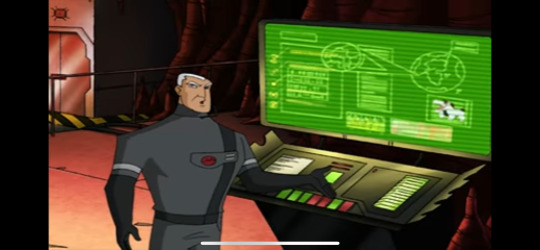
Lieutenant Alpha
A surprisingly unknown character despite showing up in two episodes with speaking scenes the Lieutenant is shown to be in charge of most of the masked grunt force at Raptordyne. Though in his two episodes, Who let the dogs out and Scents and Scents Abilities he is shown to be disliked by Veloci and doesn’t seem aware of the true purpose of Veloci’s work.
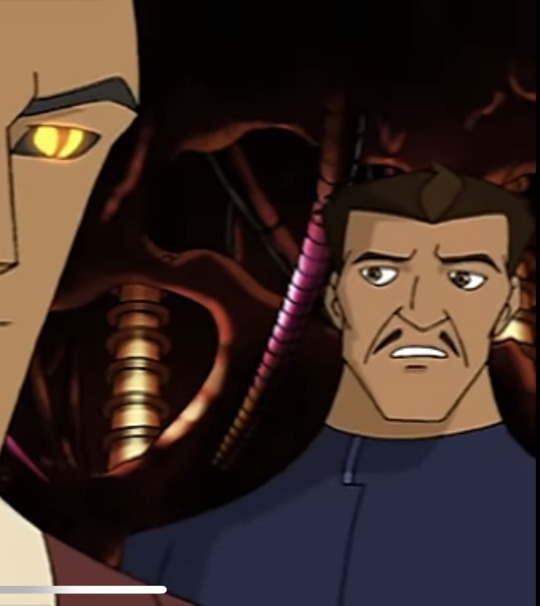
Peter
Anyone who knows me also know that this guy is my personal favorite character of all time, despite only showing up in the first episode for 20 seconds. Contrary to popular belief Peter is not actually Veloci’s assistant, his real work lies in the engineering department. He developed nanobots that are supposedly used in primordial ooze and potentially built the robot seen in the episode Wannabe or the hologram dinosaur in Who let the dog out. Peter was injected with primordial ooze however the outcome of that experiment was never seen.

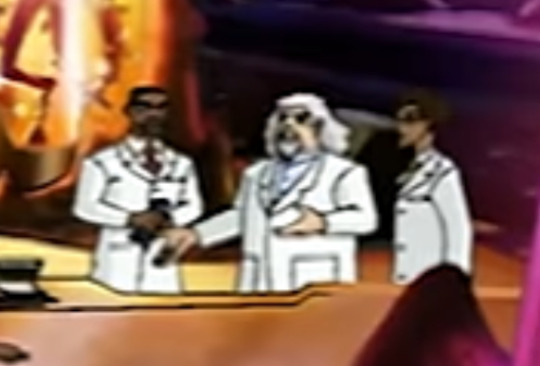
Gregor, Mina, and Robert
I would like to thank the Dinosquad discord server for helping me name these scientists, if you haven’t joined it yet go check it out. These three scientists appear in the background of a few episodes though are never named or given speaking roles. From left to right on the second picture we have Robert, Gregor, and Mina. It is implied in the episode Attack of the Brainasuarus that Veloci works directly with these three to develop prototype ooze.

The twins
These two only appear in the episode Pet Peeve and are the masked grunts working under Veloci for the day. I wanted to point them out not only because they are the only grunts seen without their uniforms but they are also significantly more incompetent than any other grunts seen in the show, thus designating them as their own significant characters.
Workplace Environment
With all our players in place let’s talk about Raptordyne itself. The underground lab seems to be made of one continuous room situated in a cave system underneath the main building. Let’s break it down.

The Entrance
Pictured above is the left end of the cave lab. It’s primarily just Veloci’s ominous skull chair and the entrance elevator (not pictured). This is the area we see the most in the show. What’s interesting about this area is the room over looking the lab just past Veloci’s chair, and the rail tracks cutting through the center of the room, but more on those later.

The Lab
Pretty self explanatory, just across the rail track is the lab where the ooze and mutants are made. The mutants shown in the test tubes are not used in the show but their humanoid shape does imply some sort of human experimentation.

The airlock
On the right side of the lab there is this specialized containment zone. As seen in the episode One Precent Inspiration this area is used for the temporary containment of live specimens and also has an airlock at the top of the containment unit for the release of airborne specimens.

The Greenhouse
Seen only once in the episode Growth Potential this room is what I believe to be in that raised portion of the lab seen in the entrance. This area of the lab is used exclusively for the production and study of mutant plants, a concept that is severely underutilized in the show.

Veloci’s Office
Realized i forgot this originally whoops. Being the influential man he is Veloci obviously needs an office that isn’t in a secret dinosaur lair. This is one spacious office in what looks like the top of the Raptordyne building.

The warehouse
Technically this isn’t a part of the underground lab, nor is it a single building in my opinion. Featured in Scents and Scents abilities we see what is one of possibly many warehouse outposts. Complete with their own security systems and staff.
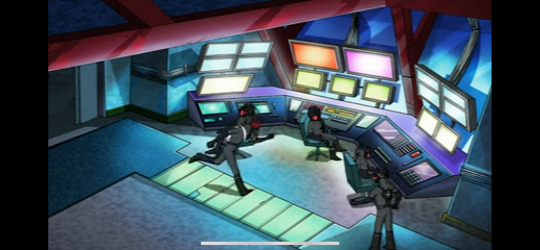
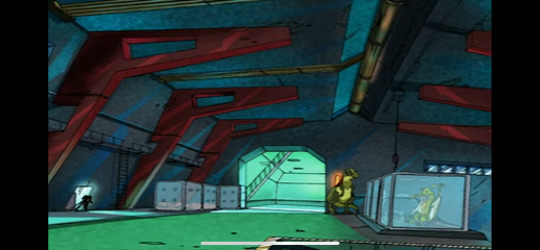
In the episode it is featured in the place seems to be controlled exclusively by the Lieutenant and masked grunts. So why is this relevant? I propose that the railway seen in the main lab is actually a transit system between the main lab and a network of these outpost facilities.
Conclusion
Go nuts nerds
#dinosquad#dino squad#victor veloci#Holy cow this took a long fucking time to write#But seriously go nuts nerds#I did not compile all this fucking info for you to not do anything with it#Write fan fic#Draw art#build the place in Minecraft idc
26 notes
·
View notes
Note
I think that regardless of the divorce between Hades and Persephone the seasons will continue to happen, if we think about the myth we will remember that the reason why Persephone was permanently trapped in the underworld was because before returning to her mother she ate some seeds of pomegranate, so following this reasoning we can think that their marriage was just a formality to preserve Persephone's honor since she was kidnapped and probably abused by Hades (we know that at that time if a woman was abused she should marry the abuser to preserve her and her family’s honor)
We know that some curses cannot be broken even by the gods (Beelzebub as an example) so we just need to think that the curse present in pomegranates (it is in all underworld foods) are so strong that even the gods who eat them are forced to be trapped in the underworld without being able to free herself, so Persephone would still be forced to spend 6 months in the underworld but now she is no longer forced to be imprisoned in the Palace of Hades and is free from the obligations of a wife
As the curse still forces her to spend part of the year there, the seasons continue as her mother is still unhappy with the situation but now the seasons (mainly autumn and winter) are much milder as Demeter is happy with her divorce. daughter, the seasons being milder (autumn and winter) and stronger (spring and summer) is not necessarily good since climate change can accidentally destroy the existing ecosystem, it would practically be divine global warming melting the ice areas, leaving deserts and hot areas in hellish temperatures, plants and food would ONLY be able to grow in spring since this would be the only climate that would not have an excessive change, which although it doesn't seem like it is very bad since planting only in one area for just a long period of time without giving the soil time to rest will deplete all nutrients from the soil leaving it infertile
Due to the changes, it would be impossible to plant food in other seasons as fruits and vegetables would not be able to adapt to climate changes and it would be unnecessary to resort to the use of pesticides and other artificial cultivation techniques to keep the few harvests alive, this would affect the quality of the crop. food would decline and would cause prices to increase since with the drop in food production it would not be able to match the great demand of the population and this would cause an increase in world hunger and food insecurity for the poorest people since we know that when there is a large demand for a limited quantity of a product the price of that product will naturally rise
The problem will be so big that it will probably also affect animals, wild animals will have difficulty adapting to climate change (probably these animals died from heat and cold as their bodies were not adapted, in fact now that I think about the high temperatures can lead to natural fires that would devastate entire forests) and many will die due to lack of food (without plants, herbivores will not be able to feed themselves and without herbivores, predators will not be able to feed themselves and this will probably collapse many ecosystems), the Livestock industries will also be affected as they, in addition to having difficulty feeding animals, will have to worry about them dying due to the climate (many industries will probably go bankrupt) with the drop in production products such as meat of any kind will probably rise in price which will undermine people's purchasing power, which will generate even greater food insecurity
In short, everyone on earth will suffer because Percy indirectly destroyed a harmonious ecosystem thousands of years old because she is so hot and charismatic, I can't imagine the look on her face knowing that humans are dying as collateral damage of her being in an ALMOST relationship romantic relationship between her and the yanderes, not to mention the damage that Poseidon can do with the tides, Beelzebub with diseases and violence and Apollo with literal Global warming, our girl is indirectly leading humans to extinction just by exist
BRO???? 💀💀💀
i have to ask, but are you an environmentalist major or something related to that????
cuz i remember you (or at least i think it was you) sending a previous long ask about the consequences of poseidon making it dangerous for humans to be in the sea, you were talking about pearls, medicine, sea food, etc and it was sooooo well-written and detailed omg 😂
but everything you wrote is EXACTLY why i'm making it so all four seasons still exist 💀 talking about the aftermath with the ecosystem is just give me psychic damage cuz i'll feel like i'm back in my bio class again 🫠
42 notes
·
View notes
Text
Animals
My current thoughts of the night: animals are alive exactly the same as any human being is. Just because they do not have the same ability to think as we do, they ought to be treated with respect. Any sentient being should be treated with respect. The same respect that we treat humans with. Having a pet is not an ownership, it should be a partnership. A beautiful friendship and agreement to trust, love, and support. You should never get a pet because you want to feel in some way superior. You should never approach wild animals just for fun with the intent to provoke. Animals are wise and they ruled Earth for over over 550 million years before the first early humans showed up. And most likely they will be here long after us. It is human nature and ego to consider our intelligence and outward appearance as the pinnacle, and we compare all other living beings to our functions. We study what reminds us most of ourselves. Which is why we have classified almost every mammal probably alive but barely bothered to try and classify at most 10% of invertebrates even though invertebrates make up 97% of all species on Earth. And we kill the animal's home by polluting it with our slaughter houses, transportation, mining, etc. Our gluttonous over consumption of slaughtering about 90 billion land animals every year for food. Only to feed 8 billion people. Meat everyday used to be a luxury, and we used to respect the animals we took from. Now meat for every meal is expected, with no regard or thought of how it ended up on our plate. We've turned something as beautiful as the natural energy exchange of all lives on Earth through the food chain into something grotesque, exploitative, pollutive, and just down right terrible. Animal agriculture produces 65% of the worlds nitrous oxide emissions which has a global warming impact 296 times greater than carbon dioxide. And it is responsible for 32% of the worlds methane emissions. And those numbers are only directly from the animal agriculture, not including the 36% of all global crops that are used to make livestock feed. Our current consumption is immoral and unsustainable. We could be getting far more calories to humans with far less emissions and land by eating plants directly. Meat consumption since 1970 has gone up more than 300%. I am not advocating that everyone becomes vegetarian or vegan, but I am saying everyone should be mindful in their consumption in all areas of their lives. If you don't want to morally over-consume products in your life, don't over-consume meat either. Obviously I do not think the onus should be solely on the consumer in any regard we must hold corporations and the government accountable. However, you vote with your dollar and everyone must do their part.
TLDR: respect our co-habitants on this earth. You are no more entitled than they are to our planet.
#animals#wildlife#vegan#vegetarian#climate change#climate action#pets#agriculture#science#environment#pollution#environmentalism#environmental science#ecology#global warming
16 notes
·
View notes
Text
Countries' greenhouse gas-cutting pledges put Earth on track for warming far beyond key limits, potentially up to a catastrophic 2.9 degrees Celsius this century, the UN said Monday, warning "we are out of road". The UN Environment Programme's annual Emissions Gap report is released just ahead of crucial COP28 climate talks in Dubai and will feed into the global response to a sobering official "stocktake" of the failure to curb warming so far. With this year expected to be the hottest in human history, UNEP said "the world is witnessing a disturbing acceleration in the number, speed and scale of broken climate records". Taking into account countries' carbon-cutting plans, UNEP warned that the planet is on a path for disastrous heating of between 2.5C and 2.9C by 2100. Based just on existing policies and emissions-cutting efforts, global warming would reach 3C.
Continue Reading.
86 notes
·
View notes
Text
I understand people immediately saying "if this was an animal people would care" out of frustration, and I know most people are not ready for this conversation and I know most people don't even want to hear this because they don't care.and i know a lot of people think this is insane to say. but if you want to talk about empathy and compassion you have to understand this, and you need look deeper.
The reality is the majority of people don't care about animals if people cared about the living they wouldn't have reached this level of cruelty. animals are tortured for things as stupid as useless as makeup and to just look at them in a zoo and for films...etc basically just for human entertainment and financial gain.If people cared about animals we wouldn't have reached this point of global warming and this amount of animals going extinct.
Animals get tortured and killed by every age group for no reason and they die out of starvation and out of thirst and avoidable and curable illnesses. we take everything from them and abandon them in so many ways literally and metaphorically.
Animals get punished for existing with us.
And everytime someone does something for animals they get told they should've done that for humans instead,everytime someone speaks up for animals they get told there's more important things to care for whilst they themselves are doing nothing for those important things or helping other humans but the thing is people that actually do things for animals also actually do things for other humans.
Most cruel people start their cruelty with animals because animals can't tell on them and then they get hungry for more and start getting cocky and this has been proven by so many studies and cases.
A lot of people have no sympathy for animals because they genuinely think an animal's life doesn't matter and only exists for them so they can do whatever they want to them and if they have a little bit of shame they would use an excuse to justify what they do/did.
Maybe ask yourself if a person doesn't have sympathy for a living being that's basically lost in this world how do you expect them to have it for other humans ?.
And a great example for people with empthy and compassion is what you're seeing right now. people in gaza are taking their time to also help animals not just themselves and each other,they actually care and feel for the living.they respect life.
And in this time a very critical time I keep seeing some people saying why are people in gaza sharing their resources with animals they should focus on themselves and making jokes under posts of Palestinians giving a dog water for example saying "why are you feeding Netanyahu" it may seem stupid but it should make you think.
If you twist my words in any way to make this post malicious even in your head that's on you.
(Note : English is not my first language and there's a lot of better explanations to this available online)
45 notes
·
View notes
Text

Monday SpaceTime 20240930 Series 27 Episode 118
Dark matter may experience forces beyond gravity
A new study has raised the fascinating hypothesis that dark matter may experience forces other than gravity.



A rare naked eye comet visible from Earth
If you’re up early in the mornings over the next few days you may get a chance to see a rare naked eye comet.



Could humans be walking on Mars in four years
Former US President Donald Trump says he would like to see humans walking on the red planet Mars by 2028, at least eight years earlier than existing plans






The Science Report
The link between obese mothers and autism.
Global warming causing an increase in the size, frequency, and severity of forest fires.
Archaeologists have discovered what could be the world's oldest cheese.

Skeptics guide to crop circles
SpaceTime covers the latest news in astronomy & space sciences.
The show is available every Monday, Wednesday and Friday through Apple Podcasts (itunes), Stitcher, Google Podcast, Pocketcasts, SoundCloud, Bitez.com, YouTube, your favourite podcast download provider, and from www.spacetimewithstuartgary.com
SpaceTime is also broadcast through the National Science Foundation on Science Zone Radio and on both i-heart Radio and Tune-In Radio.
SpaceTime daily news blog: http://spacetimewithstuartgary.tumblr.com/
SpaceTime facebook: www.facebook.com/spacetimewithstuartgary
SpaceTime Instagram @spacetimewithstuartgary
SpaceTime twitter feed @stuartgary
SpaceTime YouTube: @SpaceTimewithStuartGary
SpaceTime -- A brief history
SpaceTime is Australia’s most popular and respected astronomy and space science news program – averaging over two million downloads every year. We’re also number five in the United States. The show reports on the latest stories and discoveries making news in astronomy, space flight, and science. SpaceTime features weekly interviews with leading Australian scientists about their research. The show began life in 1995 as ‘StarStuff’ on the Australian Broadcasting Corporation’s (ABC) NewsRadio network. Award winning investigative reporter Stuart Gary created the program during more than fifteen years as NewsRadio’s evening anchor and Science Editor. Gary’s always loved science. He studied astronomy at university and was invited to undertake a PHD in astrophysics, but instead focused on his career in journalism and radio broadcasting. Gary’s radio career stretches back some 34 years including 26 at the ABC. He worked as an announcer and music DJ in commercial radio, before becoming a journalist and eventually joining ABC News and Current Affairs. He was part of the team that set up ABC NewsRadio and became one of its first on air presenters. When asked to put his science background to use, Gary developed StarStuff which he wrote, produced and hosted, consistently achieving 9 per cent of the national Australian radio audience based on the ABC’s Nielsen ratings survey figures for the five major Australian metro markets: Sydney, Melbourne, Brisbane, Adelaide, and Perth. The StarStuff podcast was published on line by ABC Science -- achieving over 1.3 million downloads annually. However, after some 20 years, the show finally wrapped up in December 2015 following ABC funding cuts, and a redirection of available finances to increase sports and horse racing coverage. Rather than continue with the ABC, Gary resigned so that he could keep the show going independently. StarStuff was rebranded as “SpaceTime”, with the first episode being broadcast in February 2016. Over the years, SpaceTime has grown, more than doubling its former ABC audience numbers and expanding to include new segments such as the Science Report -- which provides a wrap of general science news, weekly skeptical science features, special reports looking at the latest computer and technology news, and Skywatch – which provides a monthly guide to the night skies. The show is published three times weekly (every Monday, Wednesday and Friday) and available from the United States National Science Foundation on Science Zone Radio, and through both i-heart Radio and Tune-In Radio.
#science#space#astronomy#physics#news#nasa#astrophysics#esa#spacetimewithstuartgary#starstuff#spacetime#jwst#james webb space telescope#hubble space telescope
8 notes
·
View notes
Text
a few critical comments on "The Busy Worker's Handbook to the Apocalypse"
so i read this one very doomer medium article The Busy Worker's Handbook to the Apocalypse the other day, which attempts to argue that with the amount of GHGs already in the atmosphere, collapse of human society is inevitable and imminent, in a way that the scientific establishment such as the IPCC is instutionally unable to admit. I will warn, if you're prone to anxiety, don't read it, because the article is bleak as hell and quite effective rhetoric. it opens with a largely correct overview of climate science which lends it credibility, before jumping to the worst imaginable conclusions about various feedbacks and tipping points.
and like... it got me a bit. immediately after I read it, I was left with a horrifying feeling that this is as good as it will ever get, that the end of it all was only years away, that all my hopes for what I'd do for the next few decades and what is prefigured by this or that social development were utter delusions, and all there was left to do was just try and make the best of the last few years before we all die in the big cascading-failure famine.
but... ok Bryn, hold your fucking horses, let's do some research eh?
to begin with, I found one critique video that points out a number of places where the author makes scientific errors, misunderstands his sources, or doesn't justify his conclusions. for example, the author argues that a 'blue sea event' where the polar ice melts would lead to immediate, catastrophic warming as the latent heat of fusion no longer absorbs any incoming radiation, and also that the success of measures to reduce air pollution will accelerate warming; these seem to both be straight up wrong. but that doesn't cover everything I had questions about.
for example, one scenario discussed in the 'handbook' is 'multi breadbasket failure'. the idea is that, given that most of the world's food is produced in a few specific regions, this is a scenario where two or more of the major food-producing regions suffer very low yields in the same year due to climate shit. and this isn't farfetched, there is mainstream scientific discussion of this concept. for an accessible analysis, I found this article by some major capitalist consulting company (assess bias accordingly) which gives some actual numbers, including estimates of which crops are more likely to fail as the climate changes (rice, corn and soy are in trouble, but wheat, oddly enough, could actually do better in a warmer world).
however, while the author of the guide to the apocalypse suggests that, thanks to 'just in time' supply chains, there are almost no reserves of food and everything is on ships... the mckinsey article quotes a figure of 30% 'stock-to-use ratio', meaning there is a fair chunk of food in the granaries. they seem to predict that if two 'breadbaskets' fail in the same year, causing a 15% drop in yield, that ratio would drop to about 20%. the immediate result would be food price spikes (which means a lot of people would starve) but it's not a complete 'global megafamine' collapse.
'course, the question then is what happens if it happens again a few years later? but at least theoretically the 'multi breadbasket failure' scenario could be drastically mitigated by 1. producing food in more different places so the eggs are in fewer baskets 2. storing more food when times are good (something discussed in the mckinsey article) and 3. the world broadly eating less meat (since most crops are grown to feed animals, which adds a trophic level of inefficiency), so less grain is needed to feed everyone. i don't know if that's actually gonna happen, but it's not prima facie impossible.
on the other hand, the author of the Handbook argues that a world renewable energy transition is not just infeasible but physically impossible, because it demands reserves of metal that do not exist to roll out all the wires, turbines, etc etc. I was already fairly pessimistic about whether the renewable energy transition could happen in time (since there is little evidence that the current renewable deployment is making any sort of dent in GHG emissions, which remain resolutely coupled to economic activity); I was also conscious that the amount of mining to produce all the batteries and so on would have its own devastating impacts. but the argument that it is impossible even in principle is new to me.
so is that actually true? the Handbook bases this point entirely on the work of Dr Simon Michaux of the Finnish Geological Survey, who presents the calculation in this hour-long presentation based on this report (summary). this is honestly an excellent presentation, explaining the methodology really clearly - it reminds me of SEWTHA back in the day, a book I found very formative. And actually McKay also raised the question of materials:
To create 48 kWh per day of offshore wind per person in the UK would require 60 million tons of concrete and steel – one ton per person. Annual world steel production is about 1200 million tons, which is 0.2 tons per person in the world. During the second world war, American shipyards built 2751 Liberty ships, each containing 7000 tons of steel – that’s a total of 19 million tons of steel, or 0.1 tons per American. So the building of 60 million tons of wind turbines is not off the scale of achievability; but don’t kid yourself into thinking that it’s easy. Making this many windmills is as big a feat as building the Liberty ships.
McKay's analysis was based only on the UK; the figure of 48kWh/d comes from McKay's estimate of plausible maximum wind capacity for the UK only. He also takes into account some modest reductions in energy use. So my sense was that a completely renewable energy system would be an unprecedented megaproject, but not utterly implausible.
By comparison, Michaux's analysis (which I took a bunch of notes on, I'll post in a minute) has a worldwide scope, and rather than using back of the envelope physical calculations, relies on data on existing systems which largely did not exist when McKay was alive. It is nevertheless a rough estimate, and crucially, focuses on the question of completely replacing current fossil fuel use. Where good data did not exist, like the amount of steel and concrete used in a wind turbine, it was not included in the analysis, since the purpose was to get a lower bound.
The report covers a number of different minerals, many of which existing reserves fall short and it would take thousands of years to produce enough at current production levels. Copper is the big one: he estimates some 4.5 billion tones would be needed, where only 0.88 billion tonnes of reserved are publicly known to exist, and the rate of new discoveries has tailed off to near zero. I see no error in his calculation (though I haven't checked the numbers in detail, the method is sound).
However, there is a major caveat. The vast, vast majority of this copper would go to millions of battery banks used to provide just four weeks of storage to make it through the wind production lulls in the winter. This covers about 4.2 billion tonnes; by comparison the amount of copper used for one generation everything else (wind turbines, EV batteries etc.) is a still-hefty 0.3 billion tonnes. So that raises the question of whether there's an alternative to all those batteries, mature enough to be deployed at a scale to provide 0.55PWh of energy storage (or likely, more) in a decade or two. My understanding is most other tech (flywheels etc.) is still on the 'tiny pilot plant' sort of scale.
Anyway, as far as like the future of humanity goes, I already agree with Michaux's main point that maintaining current rates of energy consumption is just not viable; the future is necessarily going to be much lower energy. (I also don't really think 'decoupling' economic activity from energy use to somehow preserve capitalism's exponential curve is really plausible.)
However, the way the author of the Handbook uses Michaux's estimates is not supported. Michaux proved that a 1:1 replacement of fossil fuel energy consumption with renewables is not possible; that necessarily implies that (since fossil fuels are just starting to run dry and becoming less viable) we have to get by on less energy. And yeah, that obviously implies substantial changes to how people live in rich countries, crushing the super-rich etc.; it's fair to say the whole system must become less complex, in ecological terms.
I do still agree it's more than understandable to be pessimistic about whether that will happen without everything collapsing first - to put it mildly, there is a lot of inertia in a system this complex! - but it's not physically impossible that humans could accomplish a renewable energy transition, contract and rationalise how we use what energy we can get, and still have everyone live relatively comfortably. (After all, life on Earth has managed to live sustainably on solar power for billions of years, indefinitely recycling carbon, nitrogen etc. between high and low energy forms and dumping all the unusable high-entropy energy into space; I stand by the belief that there is no intrinsic reason that human society, even with complex technologies like computers, could not eventually assume a similar equilibrium if we survive. Though could does not mean is likely to....)
So I'm not convinced that we're a few years away from the first domino falling in the apocalypse. The situation is very very bad, don't get me wrong, I do basically agree the current socioeconomic world system is not capable of adapting fast enough as it stands, and I do find it increasingly hard to imagine the prospect of it being overturned, so I don't think the gigadeaths future is out of the question or even unlikely. But it's at least not the imminent near-certainty this essay makes out. If it comes, it will be more drawn-out than that. We don't need to live as if we will certainly die in a year or five.
So... now back to not thinking about it and fiddling while the world burns, I guess? :/
62 notes
·
View notes